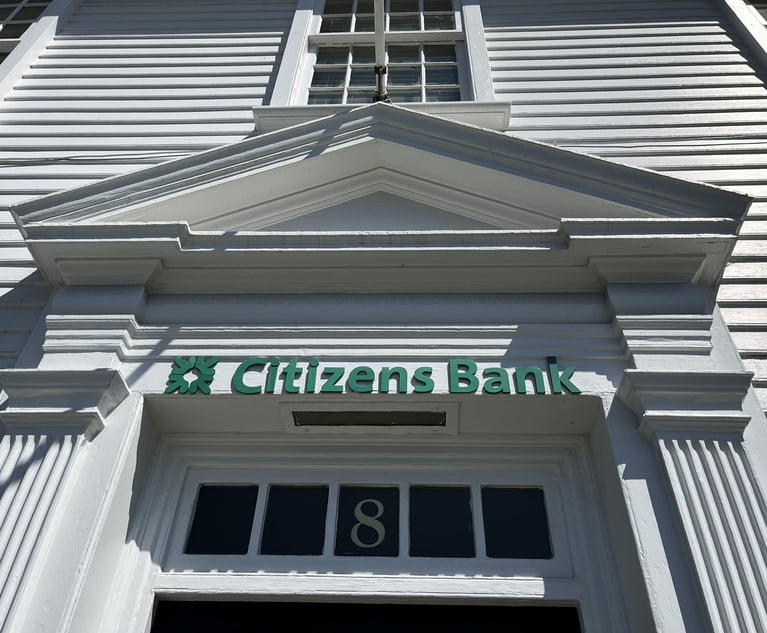 Larry Coben, shareholder at Anapol Weiss. Courtesy photo
Larry Coben, shareholder at Anapol Weiss. Courtesy photo Seat Belts, Buses and Trains: Perfect Together or Not?
When bus and train manufacturers market their vehicles without providing the purchaser with the option to use a safe restraint system, why shouldn't they do so at their financial peril? After all, isn't that what it has done to the students and train passengers who get on board every day?
January 11, 2022 at 11:13 AM
12 minute read
Recently, a Washington to New York Amtrak commuter train derailed and at least six people died and over a hundred were rushed to nearby hospitals. This calamity happened as unbelted passengers were violently thrown about inside these trains like unrestrained flying objects. After this calamity, some folks have questioned why don't trains have seat belts? Would seat belts have saved lives and reduced the documented carnage? This very same danger is repeated over and over again in school bus wrecks. While news of these horrible events garners attention and constantly begs the question of the need for more safety in buses and trains, nothing ever changes. History repeats itself.
- 1987 New York Times: "Seat belts on trains weighed after deadly crash."
"The federal government's chief railroad safety officer said today that he would seek comments on whether seat belts should be installed on the passenger coaches of Amtrak and the five commuter rail systems that use the Northeast Corridor between Washington and Boston. The official, John Riley, administrator of the Federal Railroad Administration, said he was not making a formal proposal for seat belts on passenger trains at this time but wanted to hear what railroad officials had to say in light of the collision of an Amtrak passenger train and three Conrail diesel engines last Sunday. Fifteen people were killed and 178 others were injured in the accident near Baltimore. "It's an obvious issue," Mr. Riley said of the idea of installing seat belts. "When you see an accident like this, there are all kinds of ideas that come up." The Government requires that seat belts be installed on all passenger cars sold in this country and on airplanes.
- April 2002 Liberal News and Commentary:
"Amtrak's Auto Train derailed at 5:08 p.m. on Thursday afternoon when it failed to successfully negotiate a curve. Even though pictures from the crash site show that the train's passenger cars remained virtually intact, four people were killed and 159 injured, many critically, because the passengers were tossed violently within their train cars when the cars flopped about during the derailment. The Florida Times-Union is the leading newspaper in the area of Florida where the derailment occurred. The Times-Union is based in Jacksonville. Yesterday, the Times-Union published a story titled "4 dead, more than a hundred injured in Florida Amtrak derailment." In paragraph eight of that story, a person identified as Bernie Morgan was quoted as saying, "We just started hurtling and left the track and the next thing we knew, we were bouncing off the walls." That's how people get killed or injured. They bounce off the walls, other seats, other people and other things, many of which have very hard surfaces (like the roof and the floor). Even after the train stops moving, people keep flying about until they crash into something hard enough to stop them from moving. This often results in severely broken bodies, lots of spilled blood, horrific pain and tremendous suffering, all needlessly inflicted because Amtrak is too cheap to install seat belts on their trains and because Congress has, to this point, been too gutless to require Amtrak to install seat belts on their trains. If the passengers had been secured in their seats with seat belts, surely none of them would have been killed and most injuries would have been minor in nature."
- July 31, 2007: The British Rail Safety and Standards Board (a railway industry organization) issued a major study which stated that:
"The results from the testing of the three-point seat belt applications indicated that restraining occupants with this type of belt would be likely to reduce the injury levels compared with injuries sustained by an unrestrained occupant impacting a crashworthy seat, although both were within acceptable limits."
This content has been archived. It is available through our partners, LexisNexis® and Bloomberg Law.
To view this content, please continue to their sites.
Not a Lexis Subscriber?
Subscribe Now
Not a Bloomberg Law Subscriber?
Subscribe Now
NOT FOR REPRINT
© 2025 ALM Global, LLC, All Rights Reserved. Request academic re-use from www.copyright.com. All other uses, submit a request to [email protected]. For more information visit Asset & Logo Licensing.
You Might Like
View All
Pa. Federal District Courts Reach Full Complement Following Latest Confirmation

The Defense Bar Is Feeling the Strain: Busy Med Mal Trial Schedules Might Be Phila.'s 'New Normal'
7 minute read
Federal Judge Allows Elderly Woman's Consumer Protection Suit to Proceed Against Citizens Bank
5 minute read
Judge Leaves Statute of Limitations Question in Injury Crash Suit for a Jury
4 minute readTrending Stories
- 1States Accuse Trump of Thwarting Court's Funding Restoration Order
- 2Microsoft Becomes Latest Tech Company to Face Claims of Stealing Marketing Commissions From Influencers
- 3Coral Gables Attorney Busted for Stalking Lawyer
- 4Trump's DOJ Delays Releasing Jan. 6 FBI Agents List Under Consent Order
- 5Securities Report Says That 2024 Settlements Passed a Total of $5.2B
Who Got The Work
J. Brugh Lower of Gibbons has entered an appearance for industrial equipment supplier Devco Corporation in a pending trademark infringement lawsuit. The suit, accusing the defendant of selling knock-off Graco products, was filed Dec. 18 in New Jersey District Court by Rivkin Radler on behalf of Graco Inc. and Graco Minnesota. The case, assigned to U.S. District Judge Zahid N. Quraishi, is 3:24-cv-11294, Graco Inc. et al v. Devco Corporation.
Who Got The Work
Rebecca Maller-Stein and Kent A. Yalowitz of Arnold & Porter Kaye Scholer have entered their appearances for Hanaco Venture Capital and its executives, Lior Prosor and David Frankel, in a pending securities lawsuit. The action, filed on Dec. 24 in New York Southern District Court by Zell, Aron & Co. on behalf of Goldeneye Advisors, accuses the defendants of negligently and fraudulently managing the plaintiff's $1 million investment. The case, assigned to U.S. District Judge Vernon S. Broderick, is 1:24-cv-09918, Goldeneye Advisors, LLC v. Hanaco Venture Capital, Ltd. et al.
Who Got The Work
Attorneys from A&O Shearman has stepped in as defense counsel for Toronto-Dominion Bank and other defendants in a pending securities class action. The suit, filed Dec. 11 in New York Southern District Court by Bleichmar Fonti & Auld, accuses the defendants of concealing the bank's 'pervasive' deficiencies in regards to its compliance with the Bank Secrecy Act and the quality of its anti-money laundering controls. The case, assigned to U.S. District Judge Arun Subramanian, is 1:24-cv-09445, Gonzalez v. The Toronto-Dominion Bank et al.
Who Got The Work
Crown Castle International, a Pennsylvania company providing shared communications infrastructure, has turned to Luke D. Wolf of Gordon Rees Scully Mansukhani to fend off a pending breach-of-contract lawsuit. The court action, filed Nov. 25 in Michigan Eastern District Court by Hooper Hathaway PC on behalf of The Town Residences LLC, accuses Crown Castle of failing to transfer approximately $30,000 in utility payments from T-Mobile in breach of a roof-top lease and assignment agreement. The case, assigned to U.S. District Judge Susan K. Declercq, is 2:24-cv-13131, The Town Residences LLC v. T-Mobile US, Inc. et al.
Who Got The Work
Wilfred P. Coronato and Daniel M. Schwartz of McCarter & English have stepped in as defense counsel to Electrolux Home Products Inc. in a pending product liability lawsuit. The court action, filed Nov. 26 in New York Eastern District Court by Poulos Lopiccolo PC and Nagel Rice LLP on behalf of David Stern, alleges that the defendant's refrigerators’ drawers and shelving repeatedly break and fall apart within months after purchase. The case, assigned to U.S. District Judge Joan M. Azrack, is 2:24-cv-08204, Stern v. Electrolux Home Products, Inc.
Featured Firms
Law Offices of Gary Martin Hays & Associates, P.C.
(470) 294-1674
Law Offices of Mark E. Salomone
(857) 444-6468
Smith & Hassler
(713) 739-1250





